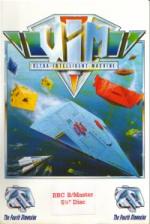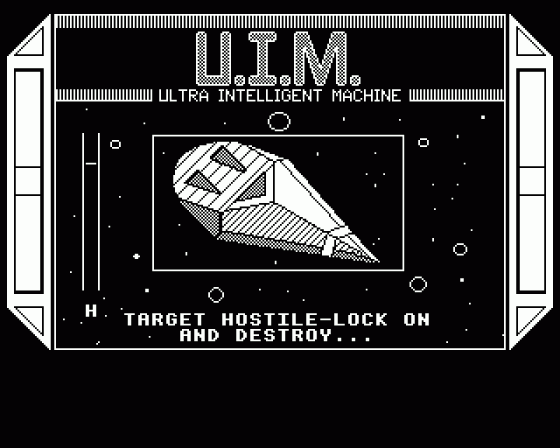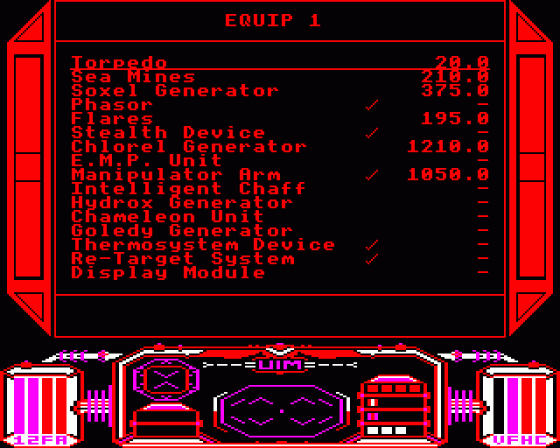
The Micro User
 1st November 1989
1st November 1989
Categories: Review: Software
Author: Submariner Lazarus
Publisher: The 4th Dimension
Machine: BBC B/B+/Master 128
Published in The Micro User 7.09
Plumbing the depths
It has finally happened - and it only took four years. A rival to Elite, possibly the most successful game ever released for the BBC Micro, has arrived. Although comparisons are inevitable let's take a look at UIM in isolation first.
The name stands for Ultra-Intelligent Machine, which is the basis of the rather thin plot line: It is the not-too-distant future when the greenhouse effect has caused the icecap to melt raising the sea level and humanity has taken to the water.
In the depths of the ocean there are lots of ports held together in loose groups called networks - there are 256 ports in each of the 256 networks. However, things are not quite that simple - are they ever? Back in the early days of oceanic settlement some scientists designed self-replicating machines which were able to go deeper than humans.
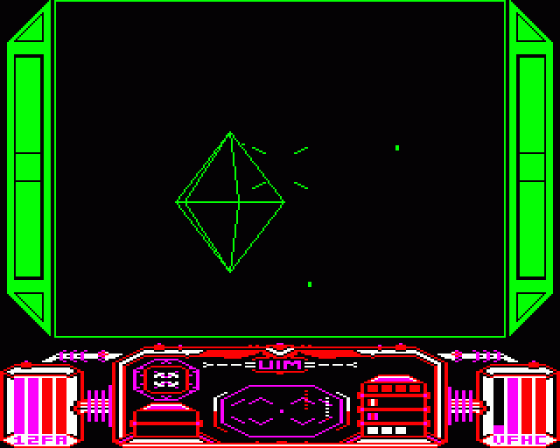
Unfortunately some of the machines mutated and no longer served mankind. There was an attempt to destroy them but this only led to them developing aggressive capabilities. Apparently the solution to all this is the UIM, which knows the answer to everything, and you're on a quest to find it.
You start with a submarine - they're all named after butterflies - equipped with lowest power weapon (called a generator), three out of four missiles, aflare, asea mine, alow grade set of shields and N$400 (Network dollars).
By buying and selling on the commodities market you build up your cash reserves and can buy more equipment to help you survive. The ship has a cargo limit of 32 tonnes but you can carry up to eight of any one type and a maximum of four types. There's a towable cargo pod which increases the capacity.

Travel between ports is interesting: After leaving one you hit H and are launched on a sub-orbital trajectory into the atmosphere. You have to keep the ship on track using the control keys otherwise your heat shield disintegrates.
You can buy another, but preserving it saves money. There is a re-entry software module but Ifound it very inefficient.
Once back in the water you head for the port's marker buoy at top speed. It is very unwise to engage in combat early in the game as the pirates will make fish meal of you. Once you're close enough to the buoy you are docked automatically.

The viewscreen gives ayou avector graphics display and below it is the short range radar which shows the positions of craft relative to you.
Later essential purchases include a central computer which allows you to load various helpful programs - the re-entry module is one. In fact many useful options like the navigational aids won't work at all until you've got the necessary software.
Once you've made a reasonable amount of money you can start buying and selling on the stock market and currency exchanges. This is just the same as commodity dealing except that prices can fluctuate more. Although you can check to see how many shares and what currencies you have there's no record of what price you bought at so it's important to keep track to ensure you sell at a profit.
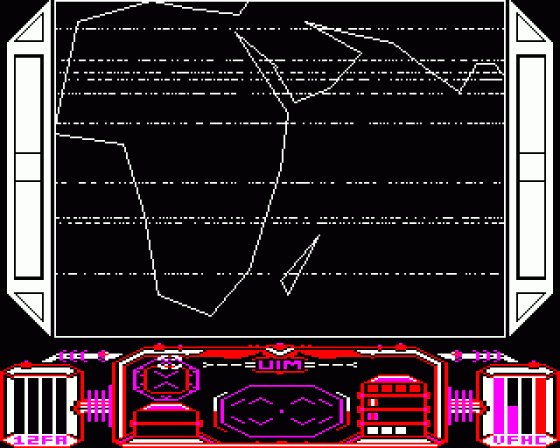
The variety of equipment you can get is quite amazing - 32 items in all. And these are just the standard types: It's possible to acquire other items which are not listed in the manual by carrying out the missions.
Perhaps the most vital item to buy is the missions module. Before you can leave one network and enter the next you must complete amission and find out what you need to do: You have to have the module. The things you get to do are usually of the fetch and carry variety - go to such and such port, pick up some medical drugs and take them to another place. Rewards can be money, equipment or occasionally nothing at all. But on completion you always get moved to the next network.
UIM and Elite are similar in many ways. Fourth Dimension rightly claims flickerless graphics and there's also no exclusive-oring, which is certainly a neat trick. However, overall control iscoarser.
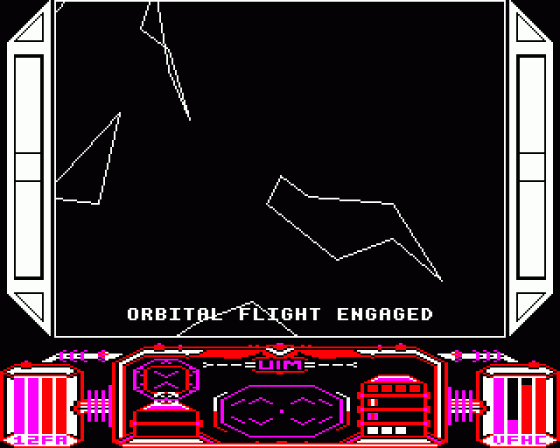
Combat is much the same, although you've got more ways of attacking and defending, and trading progresses in the same way. You don't have the difficult docking which put off so many would-be Elitists but there is the re entry procedure which requires your complete attention.
Trading is again the same: You have to find two ports which have different product prices and move commodities between them. Here the eight tonnes per type of cargo restrictions are more limiting than with Elite, but the game framework makes this less of aproblem.
Since the similarity is so strong the true test is this: Will I keep playing it the way I've played Elite for years? And the answer is yes.
Other Reviews Of U.I.M. For The BBC B/B+/Master 128
UIM (The 4th Dimension)
A review by Matthew Ridd (The Micro User)
U.I.M. (The 4th Dimension)
A review by Dave Reeder (A&B Computing)
Ultra Intelligent Machine (The 4th Dimension)
A review by Peter Rochford (Beebug)
U.I.M. (The 4th Dimension)
A review by Paul Thornton (Acorn User)

